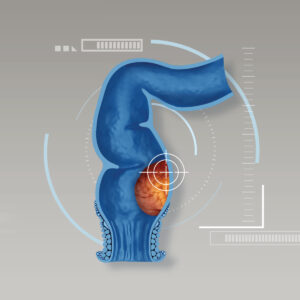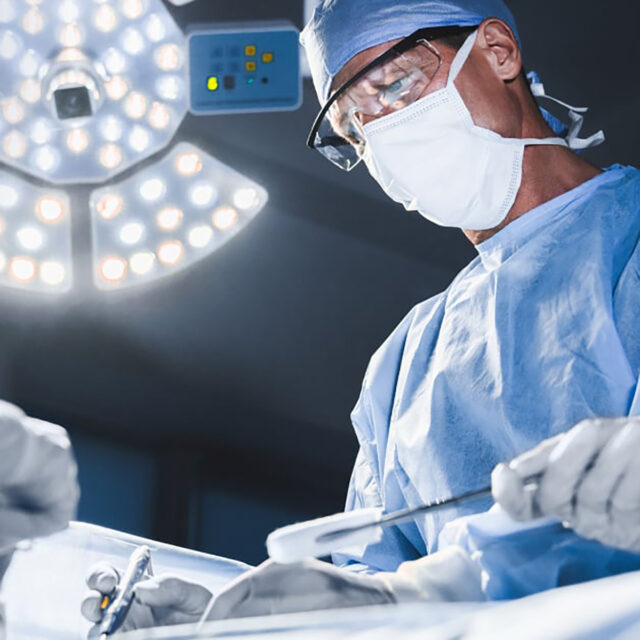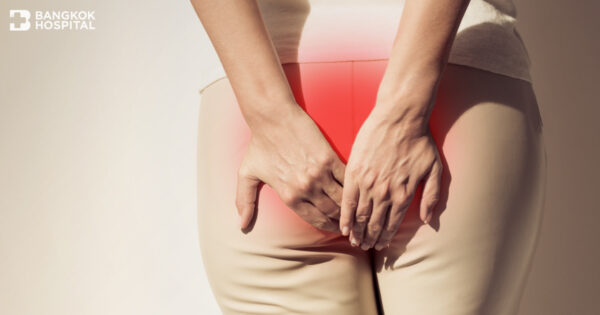Jaundice is a condition described as a yellow discoloration of the skin, mucous membranes and the whites of the eyes caused by increased level of bilirubin, a yellow-orange bile pigment in the blood.
Jaundice is typically a sign of some underlying disease process. Causes of jaundice vary from non-serious to potentially fatal. Obstructive jaundice might potentially develop due to a narrowed or blocked bile duct or pancreatic duct, preventing the normal drainage of bile from the bloodstream into the intestines and resulting in serious complications. Besides yellowing of the skin and eyes, if other accompanying signs and symtoms of jaundice exhibit including fatigue, abdominal pain, weight loss, vomiting, pale stools and dark urine, immediate medical attention must be sought as soon as possible. Not only to treat jaundice appropriately, but early diagnosis also helps to prevent other complications caused by several forms of jaundice.
Get to know “jaundice”
Excess bilirubin (known as hyperbilirubinemia) is the main cause of jaundice, a condition in which the skin, whites of the eyes and mucous membranes turn yellow. Bilirubin, a yellow-orange bile pigment is a normal part of the pigment released from the breakdown of used red blood cells. Normally, the liver filters bilirubin from the bloodstream and releases it into the intestinal tract. Normal serum values of total bilirubin typically are 0.2-1 mg/dL. If the amount of bilirubin in the blood is higher than 2-3 mg/dL., jaundice is indicated. Jaundice can be caused by a problem in any phases of bilirubin production. A newborn’s immature liver often cannot remove bilirubin quickly enough, causing an excess of bilirubin in the blood. Jaundice caused by these normal newborn conditions is called physiologic jaundice. All etiologies of jaundice beyond physiologic jaundice are considered pathologic jaundice. Obstructive jaundice is classified to be one type of pathologic jaundice which is caused by a narrowed or blocked bile duct or pancreatic duct, preventing the normal drainage of bile from the bloodstream into the intestines. The causes of obstruction or blockage of the bile ducts might include gallstones, inflammation (swelling) of the gallbladder, gallbladder cancer and pancreatic tumor.
Diagnosis of jaundice
If signs and symptoms present, medical history taking and physical examination are conducted. Accompanying symptoms of jaundice include:
- Dark urine: Urine becomes dark because of the excessive bilirubin is excreted through the kidneys.
- Pale stool: The presence of pale stools suggests an obstructive or post-hepatic/liver cause as normal feces get their color from bile pigments. If an obstruction occurs, it prevents bile to be excreted into the intestines, causing pale or clay-colored stool. However, pale stool might not clearly present since there is some bile remains in the begining phase of the obstruction.
In addition, other contributing factors to develop jaundice include alcohol consumption, certain medications, hepatitis virus infection, previous history of entering into some epidemic areas, family history of inherited blood disorders and some underlying diseases.
Jaundice and strictures of the bile duct
Although jaundice can be caused by various conditions, primary cause is often associated with liver abnormalities. Nevertheless, another potential cause of jaundice is the strictures of the bile duct. A stricture is a narrowing of the bile duct, which prevents bile from draining into the intestine. The bile backs up into the liver, resulting in obstructive jaundice. Abnormal signs typically present with yellowing of the whites of the eyes, yellow discoloration of the skin and pale stool. Nonetheless, some patients might not exhibit any signs or symptoms until they have annual check-ups with the abnormal results of liver functions. Very often, the abnormality of biliary system is overlooked, leading to delayed diagnosis and treatment.
Causes of obstructive jaundice
The narrowed or blocked bile duct might result from several conditions, including:
- Gallstones: Gallstones are the most common cause of obstructive jaundice. Gallstones may pass through the common bile duct and cause obstruction. Larger stones can become lodged in the common bile duct, causing complete obstruction;
- Inflammation (swelling) of the gallbladder; and
- Cancers e.g. pancreatic cancer, gallbladder cancer, bile duct cancer (cholangiocarcinoma) and small intestine cancer.
Obstructive jaundice should not be left untreated.
In some patients, mild jaundice can be left without the requirement of additional treatment. Nevertheless, patients with continuously high bilirubin level potentially develop complete bile duct obstruction, resulting in a greater chance of biliary tract infections. The infection of biliary tract leads to impaired digesteive functions without or limited bile secretion into the intestine, causing severe abdominal pain, intermittent high fever and life-threatening conditions such as acute kidney failure, sepsis and circulatory failure. Disease progression gets worse quickly especially in geriatric patients with other underlying diseases.
If the cause of bile duct blockage is derived from tumors or cancers, related symtoms include loss of appetite, unintentional weight loss and janundice with the absence of abdominal pain. The serious complication is the infection of biliary tract, primarily caused by bacteria infection in the proximal part of the small intestine next to the bile duct. Patients present with high fever, yellow discoloration of the skin and the whites of the eyes and severe abdominal pain. This condition is usually fatal if appropriate treatments cannot be given in time.
Jaundice and gallstones
Statistical data reveals that obstructive jaundice is primarily caused by gallstone blockage with the incidence up to 20%. In patients diagnosed with gallstones, if jaundice presents accompanying with the intensifying abdominal pain in the mid- to upper-right section of the abdomen, obstructive jaundice caused by lodging gallstones is potentially indicated. Immediate medical attention must be sought urgently in order to determine the cause of the jaundice whether it is linked to gallstone obstruction. Imaging test involves abdominal ultrasound. Abdominal ultrasound shows signs of inflammation or indications that there is blockage of bile flow. It substantially helps identifying gallstones and showing gallbladder or bile duct inflammation or blockage. If the imaging results indicate the obstruction of the bile duct, endoscopic retrograde cholangiopancreatography or ERCP is highly recommended. ERCP is a procedure to diagnose and treat problems in the liver, gallbladder, bile ducts and pancreas. It combines X-ray and the use of an endoscope, a long, flexible, lighted tube.
Treatment of jaundice
Since jaundice can be caused by several conditions, ranging from mild to fatal diseases, being aware of abnormal signs and symptoms remains vital in order to seek immediate medical assistance as soon as abnormalities exhibit. Definitive treatment is determined by the underlying cause of jaundice. Pain medications and antibiotics might be prescribed to treat the infection. If gallstones are discovered, endoscopic removal of the stones obstructing the bile duct is considered. Endoscopic stenting by endoscopic guidance or radiologic guidance is occasionally necessary as a temporary relief of the bile duct obstruction.
In case that the root cause of obstructive jaundice is derived from a malignant tumor, the treatment outcome for such patients is best served if the tumour can be surgically removed by highly experienced hepato-pancreato-biliary surgeons. Nevertheless, if tumors are not resectable, other treatment options might be considered e.g. chemotherapy and radiotherapy. If obstructive jaundice is left untreated, there will be a greater risk to develop infections when bilirubin overflows into the blood circulation. To simply distinguish the causes of obstructive jaundice, painful obstructive jaundice is likely associated with gallstones while painless obstructive jaundice is strongly linked with tumours. Regardless of the cause of jaundice, patients generally seek medical attention fairly late, leading to delays in accurate diagnosis and effective treatments.
Since obstructive jaundice can strike anyone at any age, the yellowing of skin and the whithes of the eyes should not be overlooked and left untreated. Early diagnosis is highly advised in order to identify the cause of jaundice and treat it at the root cause effectively.












